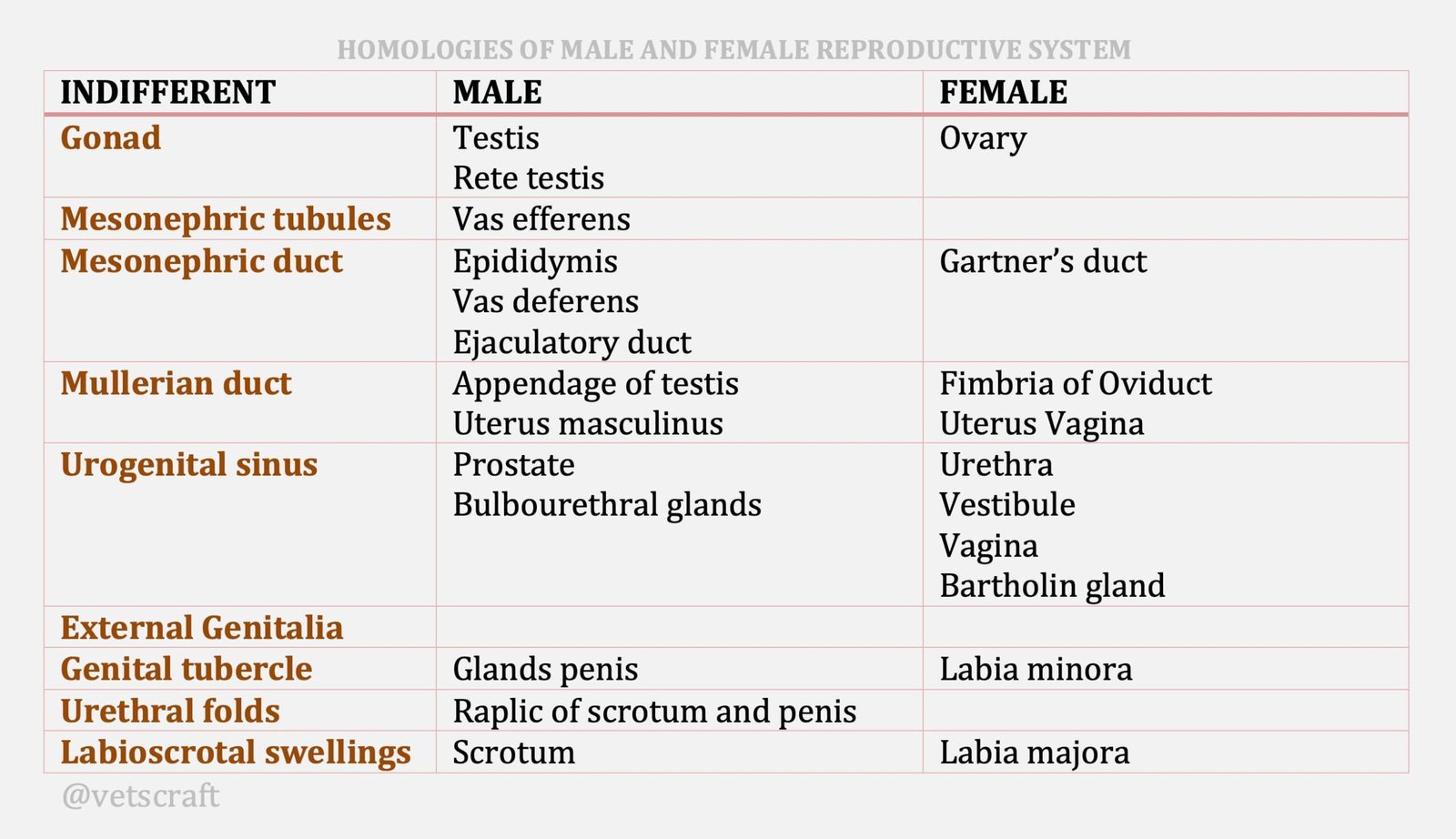TABLE OF CONTENTS
Development of Male and Female Reproductive Organs
The development of male and female reproductive organs in animals is a complex process that begins during embryonic development and continues until sexual maturity.
Sexual differentiation, like the differentiation of other systems, proceeds, in consecutive steps:
- Chromosomal sex is determined at fertilisation
- Gonadal sex
- Somatic sex by differentiation of the Mullerian or Wolffian duct system into female or male accessory genitalia.
- Establishment of the psychic sex with the characteristic male or female behavior. Although the genetic sex of the concepts is determined by its sex chromosome complement, each embryo is potentially of developing the genitalia of either sex, since the primitive gonad has all the cellular elements to give rise to a testicle of ovary.
Genes associated with female characteristics are located on the X chromosome. Thus, two X chromosomes (XX) are necessary for the differentiation of a normal ovary. Genes for male characteristics are located on the autosomes and on the Y chromosome.
In humans, individuals with Turner syndrome (45, X) are females, while those with 46, XY; 47, XXY (Klinefelter syndrome); 48, XXXY; and 49, XXXXY are all males. The Y chromosome contains genes that codefor the production of a protein factor: the H-Y (Histocompatibility-Y) antigen. Thus, when a Y chromosome is present and the H-Y antigen is expressed, the developing gonad will be signaled for the formation of testes. In the absence of a Y chromosome or when the H-Y antigen fails to express itself, then the undifferentiated gonad will become an ovary.
Despite the male determining role of the Y chromosome, a gene on the X chromosome appears to be necessary for testosterone productions.
- Formation of the genital ridge.
- Migration of primordial germ cells from the yolk sac to the genital ridge.
- Gonads at this stage are sexually bipotent and contain an inner medullar and outer cortex.
- Primordial germ cells invade medulla to form primary sex cords.
- Sexual differentiation occurs at this stage when genes for male (XY) is present, cortical development is inhibited and testis develops. When genes for femaleness predominate in XX embryo the medulla is inhibited and cortex develops. In this case, the persisting primordial germ cells in the epithelium invade the cortex as secondary sex cords and an ovary develops. Thus cells of primary sex cords ancestors of spermatozoa while cells of secondary sex cords are ancestors of oocytes.
Following gonadal differentiation, the necessary genitalia will develop under the influence of the gonads. When the testes are formed, they secrete androgens, mainly testosterone, from Leydig cells and Müllerian Inhibiting Hormone (MIH)from Sertoli cells. Testosterone stimulates the growth and development of the Wolffian system and the external genitalia of the fetus. MIH blocks the development of the Müllerian system. The inhibitory activity of MIH on the Mülleriansystem of the male fetus is limited to a short, sensitive period in fetal development. In the calf, this sensitive period for MIH activity extends until day 62 of gestation. When an ovary has formed, the absence of testicular morphogenic agents permits the Müllerian system to develop, and the Wolffian duct and tubules regress to vestigial rudiments.
Ablation (Removal) of the fetal male gonad prior to differentiation of the Wolffian system causes differentiation of Mullerian system in an individual with XY constitution.
Homologies of Male and Female Reproductive System


